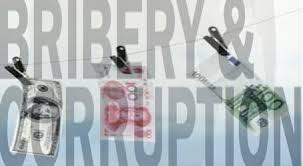The OECD Report: Shedding Light on Foreign Bribery
 The OECD has been at the forefront of the global battle against corruption. Its recent report, Foreign Bribery Report (available here) the OECD provided important insights into the occurrence of foreign bribery.
The OECD has been at the forefront of the global battle against corruption. Its recent report, Foreign Bribery Report (available here) the OECD provided important insights into the occurrence of foreign bribery.
The report highlighted many important issues, some of which I address below, but make no mistake the global effort at anti-corruption enforcement is entrenched and growing. It is trite to say that global anti-corruption enforcement is increasing – everyone knows that.
Foreign governments are realizing the benefits to enforcing anti-corruption laws – government revenues increase after hefty fines are paid. The global war against corruption has rallied many to the cause in the interest of reducing global poverty and preventing destabilized governments that can be safe havens for terrorist organizations.
The OECD Report points to corruption in the oil and gas, and construction industries, both of which have long been recognized as the riskiest businesses. Interestingly, the transportation industry (people and objects) is cited as a high-risk industry, which makes sense considering the number of interactions with foreign customs officials.
One significant finding confirms what I have always noted – bribery is rarely, if ever, committed by a rogue employee. Instead, the OECD Report notes that over fifty percent of bribery cases involve senior managers, either approving or making illegal payments.
The OECD Report also suggests that bribery schemes are becoming more sophisticated and complex. In response to aggressive enforcement, criminals naturally try to avoid detection by developing new and complex methods for moving money. That has serious implications for compliance professionals – due diligence and internal controls have to focus on identifying beneficial owners of companies and monitoring access and authority to money.
For prosecutors, the complexity of bribery schemes makes it more difficult to unearth illegal payments and has lengthened average bribery investigations from four to seven years. Bribery is a very difficult crime to prove, and it is made even more difficult when prosecutors are forced to seek documents and witnesses around the globe.
The implications of longer government investigations are profound, especially when you consider that the statute of limitations is five years in the United States.
 Bribery is a crime that does not necessarily pay or make sense – rational actors may not be making as much money as they think. The cost of bribery is high – eleven percent of a transaction’s value and almost thirty-five percent of its profits. These costs are especially significant when you consider the risk of detection and enforcement and the resulting “costs” of internal investigations, fines and penalties, and reputational harm.
Bribery is a crime that does not necessarily pay or make sense – rational actors may not be making as much money as they think. The cost of bribery is high – eleven percent of a transaction’s value and almost thirty-five percent of its profits. These costs are especially significant when you consider the risk of detection and enforcement and the resulting “costs” of internal investigations, fines and penalties, and reputational harm.
The OECD Report confirms what we already know – bribery is alive and well but it is becoming more difficult to carry out. As the global war against corruption continues to gain steam, companies have to make sure the message against bribery is communicated and enforced within their corporate culture. Bad actors will always engage in bad acts but some may be deterred and minimized in those company cultures that value ethics and compliance.














